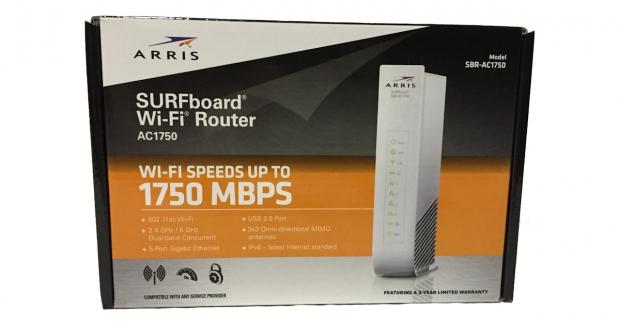
The Bottom Line
Introduction
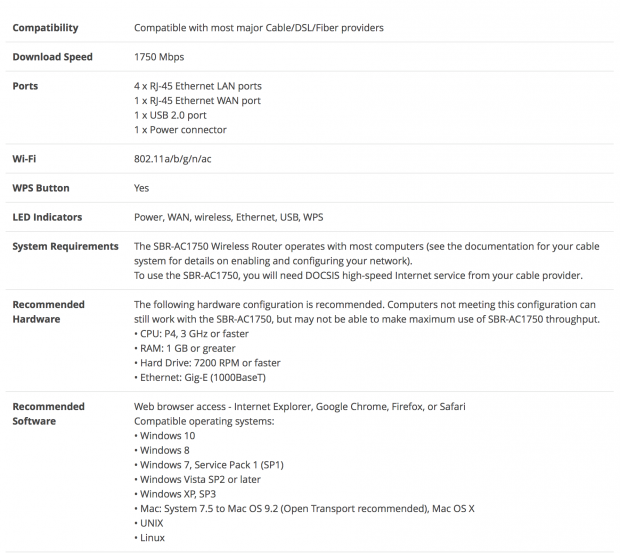
Arris has long been a world leader in cable technologies, after 2013 when it acquired Motorola's Home Division they picked up several brands we use in our homes. One of those was the Surfboard product lineup, commonly known as the default modem for many service providers. Moving to today, Arris is looking to push its brand into the consumer market expanding the Surfboard brand to routers, starting with the SBR-AC1750.
The Surfboard AC1750 is a dual-band 802.11ac solution that leverages the 2.4GHz band for peak throughput of 450Mbps while the 5GHz band tops out at 1300Mbps. Four gigabit Ethernet ports are paired with a single WAN and like many modern solutions this router too houses a USB 3.0 port on the rear. The antennas for this solution are a 3x3 internal configuration and speaking of the internals of this unit; I was unable to find any information on the CPU, RAM or flash on this particular unit online, but that didn't stop me from finding out for myself as you will see on the next page.
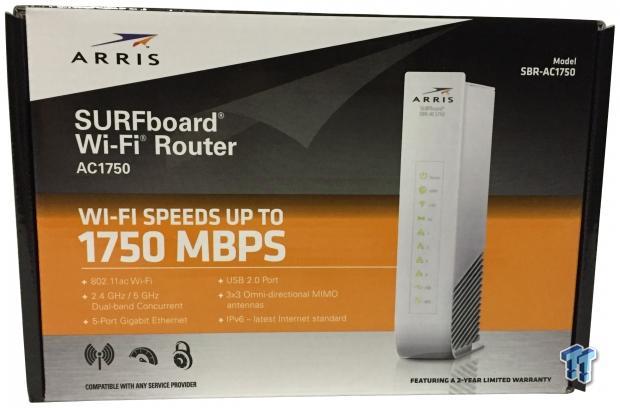
Specifications, as mentioned above, were a bit sparse but nonetheless seen above. As the model suggest, this solution is an AC1750 wireless solution with five Gigabit Ethernet ports placed on the rear of the unit. While this solution does use the latest 802.11ac technology, it still maintains backwards compatibility with a, b, g and n networks.
Arris Surfboard AC1750

Packaging for the SBR-AC1750 shows its Wi-Fi class in the center with an image of the router to the right. Down below we have several lines of marketing information.
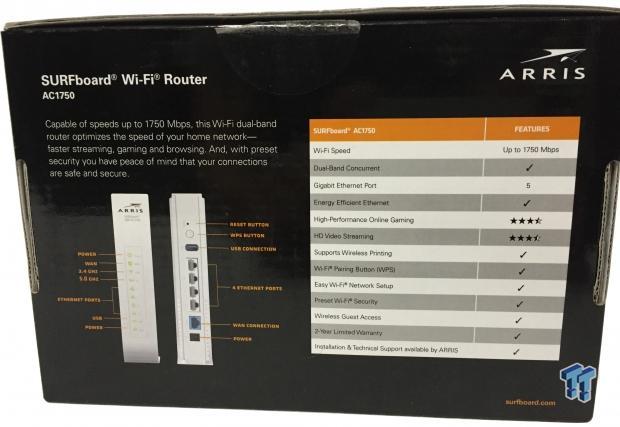
The back of the box has a checklist of the device features, to the left a diagram of all the connectivity options for the router.
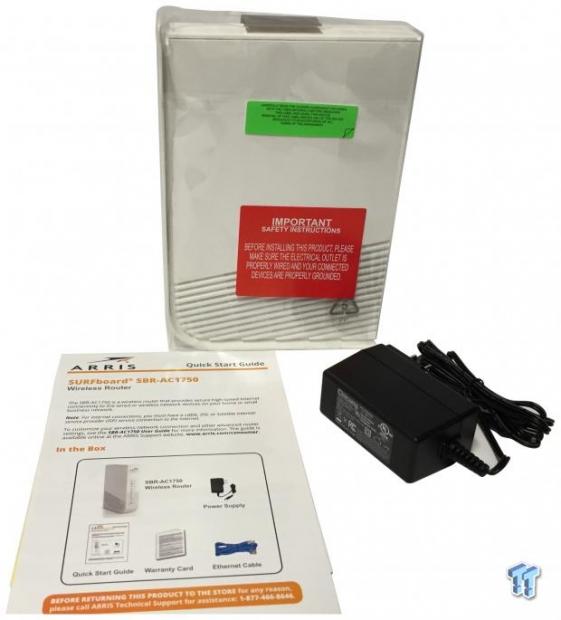
The scope of delivery is quite simple, with just the router and power adapter included.

The front edge of the Surfboard houses all the LEDs with power, up and downstream internet connectivity and activity lights rounding out.

The back of the router houses the four Gigabit LAN ports while a single USB port has been placed above. Down below, the WAN input sits next to the power supply input.

Here we have the internal PCB for the Surfboard. This router is very similar in components to the Belkin F9K1115v2, an openWRT supported solution, so it is possible this router too could support alternative firmware.
At the heart of this router is the QCA9558 SoC at 720MHz below that DDR2 memory. To the left, we have both the 802.11ac radio at the top in the QCA9880 and below QCA8337 Gigabit Ethernet switch.
Test System Setup and Router Management
Tyler's Test System Specifications
- Motherboard: ASUS Z97-A - Buy from Amazon / Read our review
- CPU: Intel Core i7 4770K - Buy from Amazon / Read our review
- Cooler: Corsair H100i GTX - Buy from Amazon / Read our review
- Memory: Patriot Viper 3 16GB (4x4GB) DDR3 1600 - Buy from Amazon
- Video Card: NVIDIA GeForce GTX 980 - Buy from Amazon / Read our review
- Storage: Intel 730 480GB - Buy from Amazon / Read our review
- Case: Corsair Obsidian 750D - Buy from Amazon / Read our review
- Power Supply: Thermaltake Toughpower 750W - Buy from Amazon / Read our review
- OS: Microsoft Windows 10 - Buy from Amazon
Management GUI
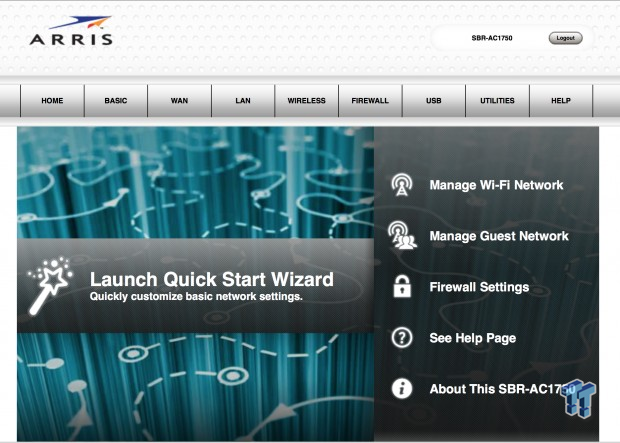
To start things off with the Surfboard, web management for this solution is pretty clean cut. If you have ever used one of Arris Surfboard modems, then this layout should look familiar. At the top, we have tabs for WAN, LAN, Wireless, Firewall, USB and Utilities.
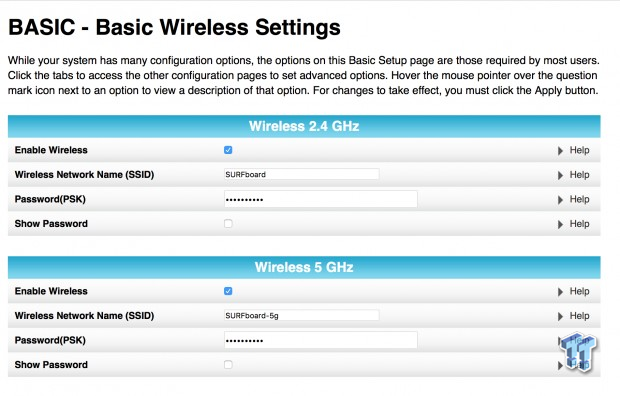
Basic wireless settings allow you to change the SSID of each network along with its password.
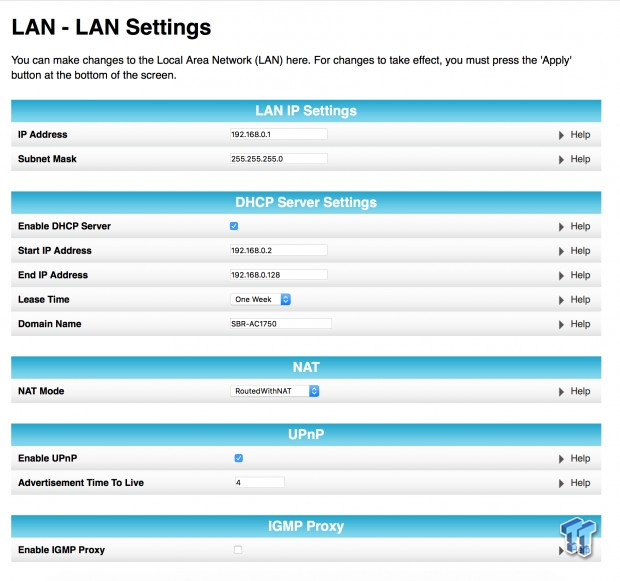
LAN options include the ability to change the server settings and IP along with the NAT and UPNP.
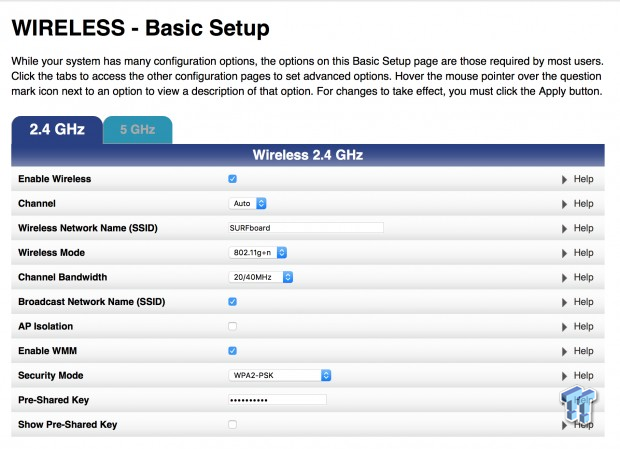
Deeper into wireless settings we have options for changing the SSID and channel widths.
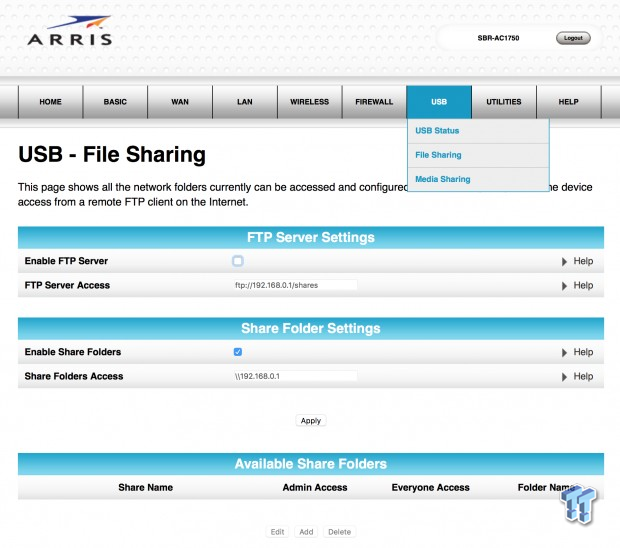
The USB menu gives you access to the FTP server and shared folder settings. No print server is available with the Surfboard.
Benchmarks - Wired and Wireless Throughput
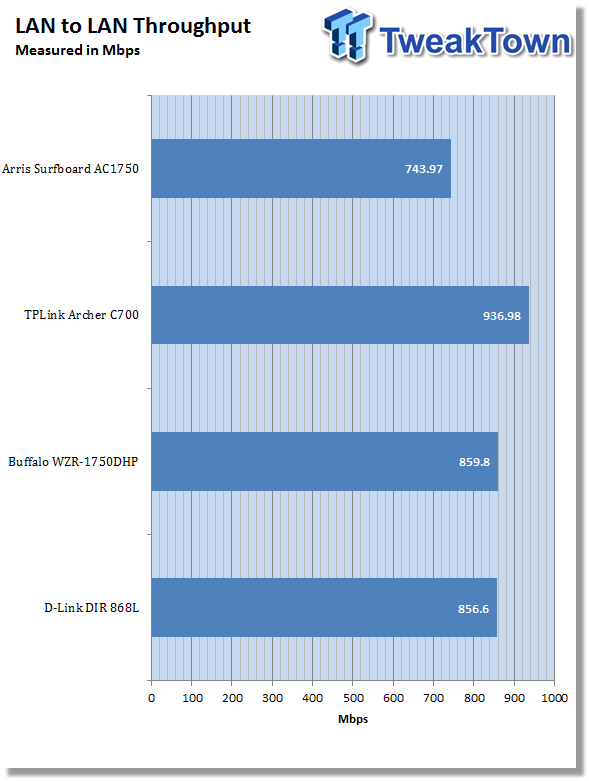
Kicking off our testing was our LAN to LAN throughput testing. As seen above, when compared to other AC1750 solutions the Arris did come up a bit short in this department. At 743 Mbps, its switching throughput is about 100 Mbps under the next solution.
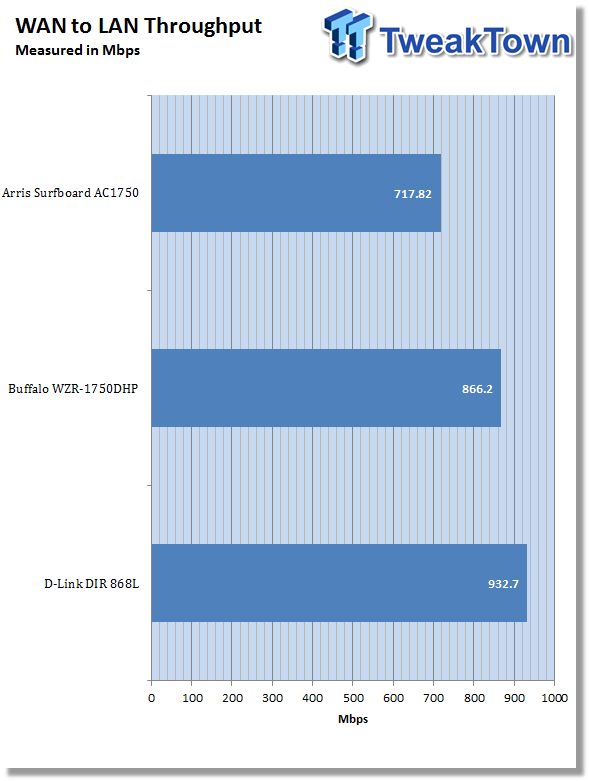
WAN to LAN took a slight hit as well coming in at 717 Mbps.
Benchmarks - Wireless Throughput
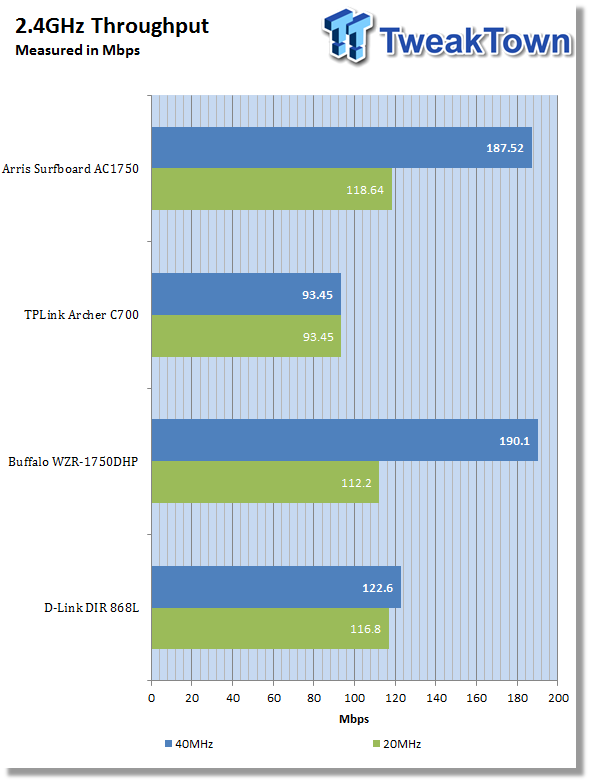
2.4GHz throughput was rather impressive for the Surfboard as it was able to keep up with the 1750DHP from Buffalo. 20MHz came in at 118 Mbps while 40MHz reached 187 Mbps.
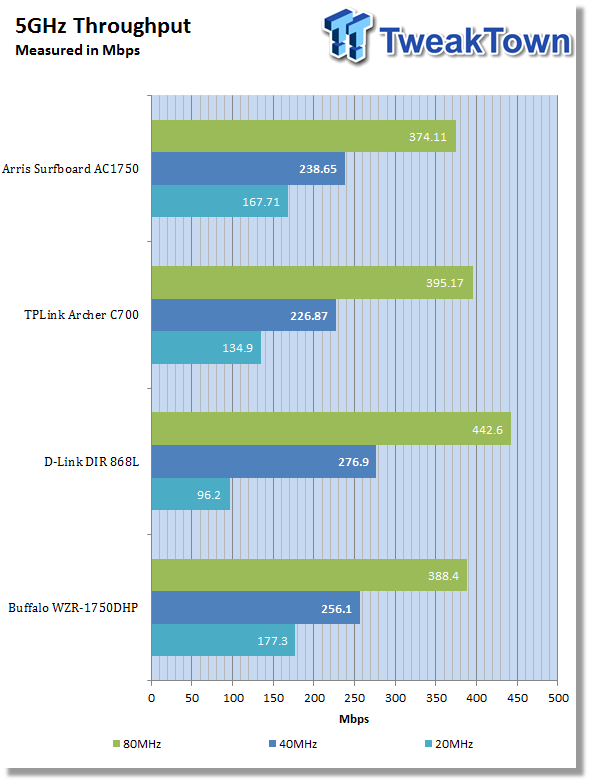
Testing the 5GHz band, we start with 80MHz performance reaching 374 Mbps while 20 and 40MHz band came in at 167 Mbps and 238 Mbps, respectively.
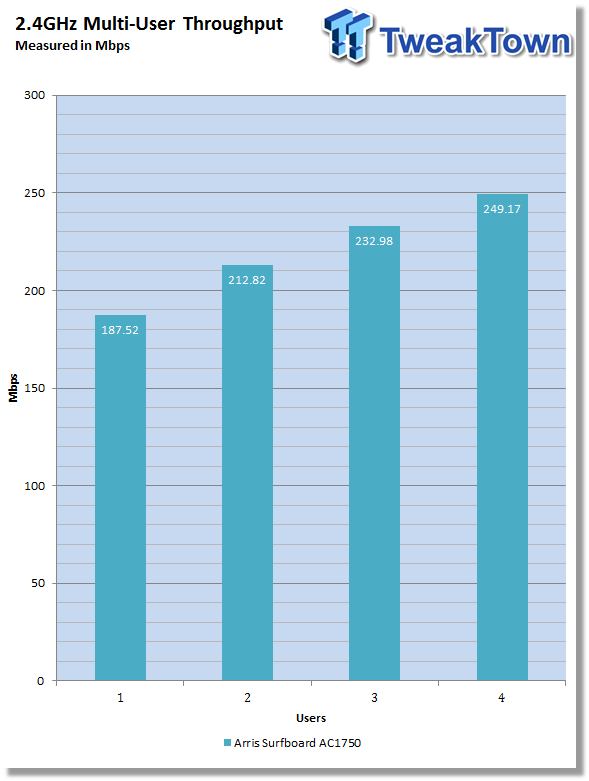
To show more real-world capabilities of wireless routers, I have begun testing throughput with multiple clients. With the 2.4GHz band, the Arris peaked at 249 Mbps with four users.
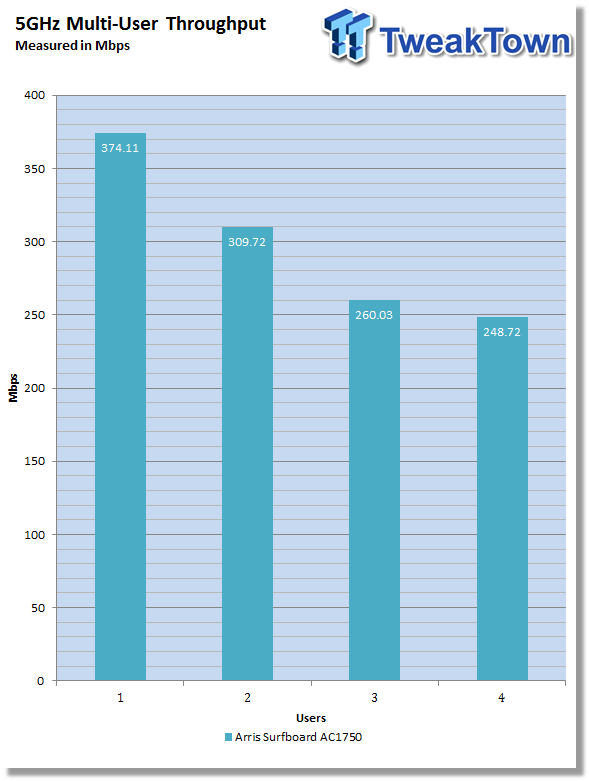
The 5GHz band was the opposite as it peaked with a single user at 374 Mbps and four users at 248 Mbps.
Final Thoughts
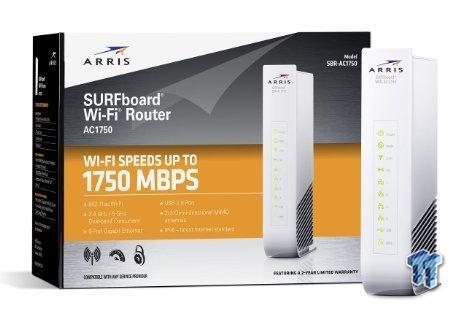
The Surfboard AC1750 is a strong entry into the wireless router market for Arris. As a starting point, the build quality of this router is solid, the plastics both look good and offer durability. While many of the solutions that come through the lab are show pieces, it's nice to see a router that is simplistic in its design and pairs well with existing modem solutions from Arris. The front panel of this router is slightly glossy, but the white coloring dulls it out, so you don't get the normal dust and dirt showing as much, and the LEDs are quite bright especially in a dim lit room.
The performance of this router was below average on the wired side, with both LAN and WAN showing throughput results in the 700 to 800 Mbps range. On the wireless side, things picked up a bit as the Arris produced 2.4GHz performance right in line with comparable AC1750 solutions tested in the past. 5GHz performance was top notch for AC1750, as this router peaked out at 374 Mbps on the 80MHz width. Multi-User performance showed the Surfboard to do quite well with device connections increasing starting at 187 Mbps with a single connection and topping out at 248 Mbps with four. 5GHz flipped those results as the Surfboard hit 374 Mbps one on connection and 248 Mbps on four.
The Web GUI for the Arris is one of the cleanest and more user-friendly solutions I have used. The menu system is made up of tabs across the top that make navigation simple while adding to this is how snappy this interface is. In the four weeks I used this router for my home network solution, I was quite happy with the stability of the router. I had no issues with the router dropping out or locking up and it was able to keep up with my media streaming habits.
The Arris Surfboard SBR-AC1750 carries an MSRP of $129.99 with a two-year warranty.

